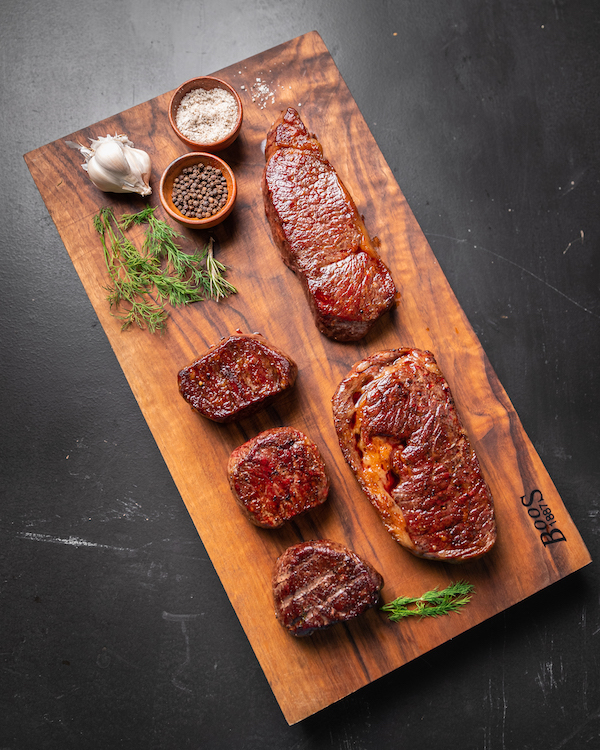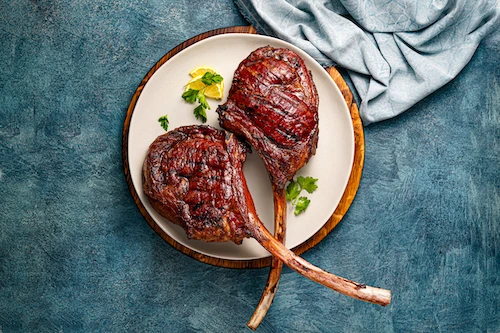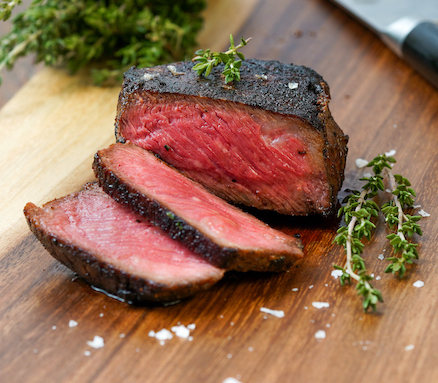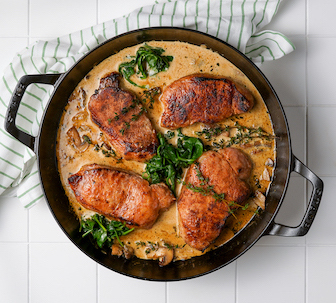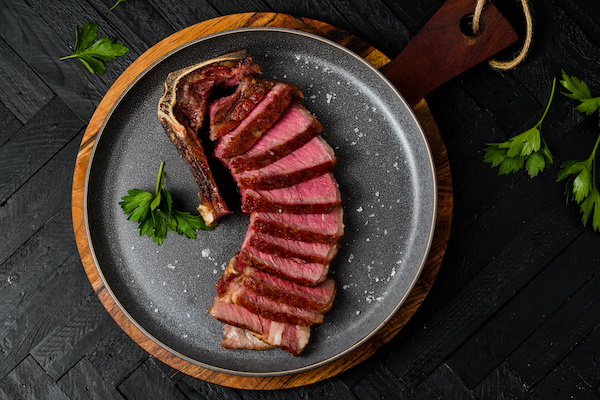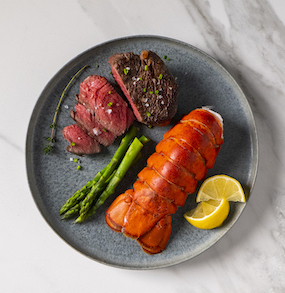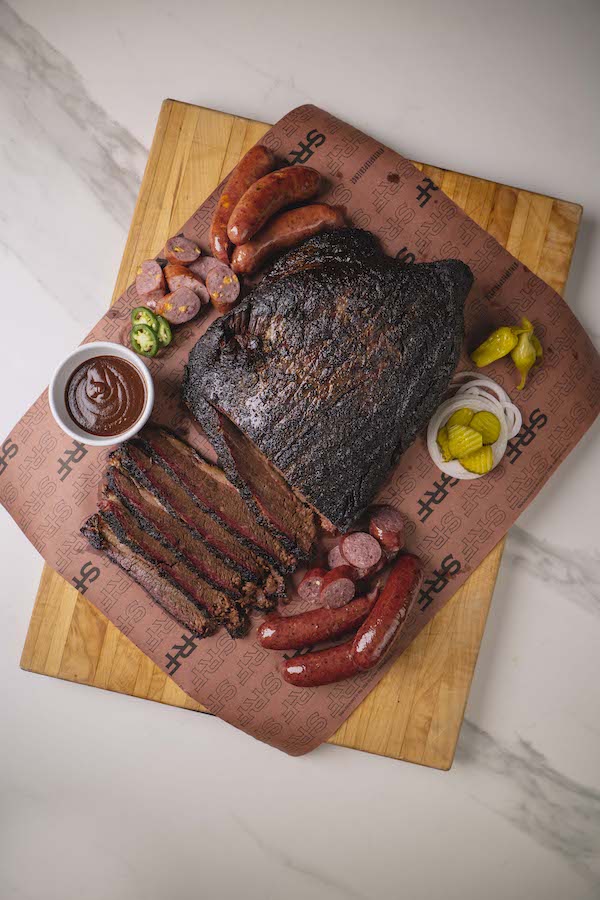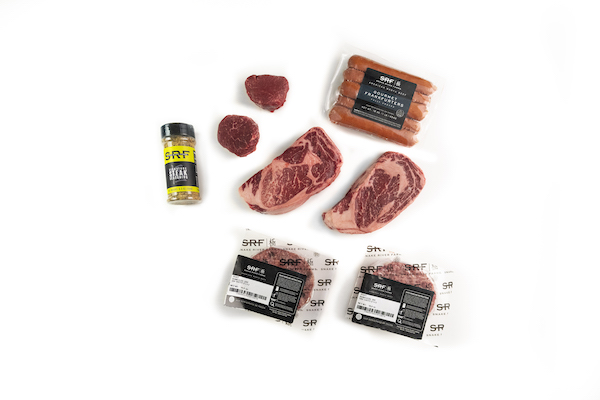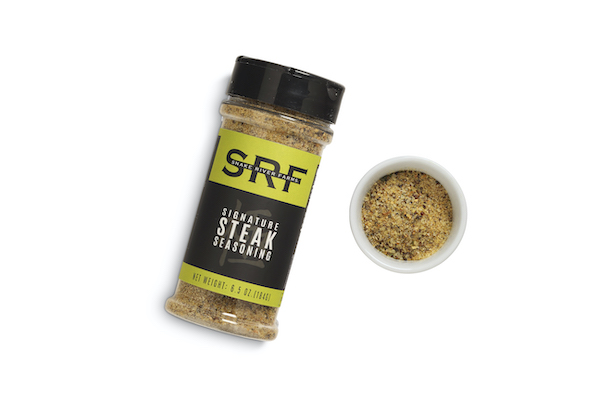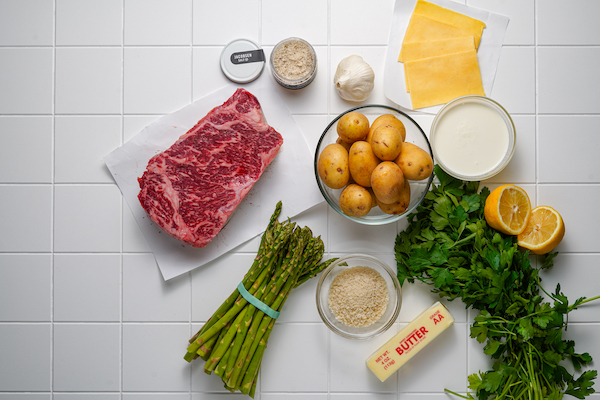How to Thaw Large Cuts – Roasts and Hams
HOW TO THAW A WAGYU ROAST OR KUROBUTA HAM
We use a flash freezing process that quickly takes our Snake River Farms from fresh to frozen at a temperature of minus 20°F. This preserves the high quality of our products so you can serve an amazing meal for your family and friends.
Flash freezing preserves the rich marbling, texture, and taste of our roasts and hams, so they retain these delicious characteristics when they are prepared and served.
The temperature range between 40°F and 140°F is known as the “danger zone” by health inspectors. These temperatures create an environment that allows bacteria to grow. NEVER thaw your products at room temperature or in hot water, for this reason. Even if the center of a large cut is frozen, the exterior can be in the danger zone and create food safety issues.
You may see recipes or tips that call for a roast to sit at room temperature to warm up. If you follow this method, do not allow your product to sit out for more than two hours.
Here are the safe ways to thaw your roast or ham:
THE BEST WAY: THAWING ROASTS AND HAMS IN THE REFRIGERATOR
Snake River Farms roasts and hams should be thawed in the refrigerator at a temperature below 40°F. This keeps your food safe and retains all the natural flavor, tenderness and texture.
This method is simple and straightforward. Simply place your wrapped roast or ham on a baking or other container to catch drips or condensation. Place it in your refrigerator and let it slowly thaw.

HOW LONG DOES IT TAKE FOR A ROAST OR HAM TO THAW IN THE FRIDGE?
For a large item, the time to completely thaw can be a matter of days. The USDA guidelines for thawing call for 24 hours for each five pounds of product. This means a 20 pound ham can take four or more days to completely thaw.
To be safe, add an extra day or two to the thawing time. Once thawed, all Snake River Farms retain their freshness for five to seven days.

FASTER WAYS TO THAW ROASTS AND HAMS

COLD WATER THAWING
When there’s not enough time to thaw a roast or ham in the refrigerator, the cold water method is an option. This thaws your product faster, but requires a higher level of attention.
First, check to see that the product is fully sealed. If you find a leak, move the product to a leak-proof package or plastic freezer bag. A leak can introduce bacteria to the product or cause the ham or roast to absorb excess water.
Submerge the product in cold tap water. Do not use hot water to help speed up the process. This can lower to temperature into the danger zone and cause a food safety problem. Change the water every 30 minutes until the roast or ham is thawed. Estimate 30 minutes for each pound of product. Once thawed, cook the product right away.
THAWING PRIME RIB OR HAM IN THE MICROWAVE
File this method under “dire emergency” since it is less than ideal for a perfectly prepared roast or ham. There is also a problem of fitting a large cut into a microwave. Thawing in the microwave will not simply defrost it, but it will also being to cook the ham or roast. Rapid changes in temperature promote bacteria-growth and potentially sickness. If you do use the microwave to thaw (again, not advised), check it frequently to ensure it is only defrosting. Once the product is thawed, cook immediately.
ALWAYS PLAN AHEAD WHEN IT COMES TO THAWING YOUR ROAST OR HAM
Make a plan that allows ample time to fully thaw your product before the date and time of your big meal. A slow thaw in the refrigerator is the safe and easy method and provides the best final results. As a final note, do not thaw in the garage, basement, car, outdoors, the kitchen counter or anywhere the temperature can’t be controlled.


